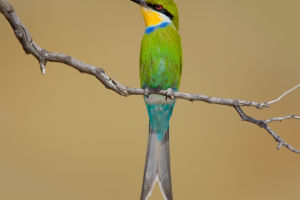Giants Of Wisdom And Power
The elephant is an awe-inspiring creature, known for its massive size and remarkable intelligence, and it stands as the heaviest land animal on Earth.
Whether in Asia or Africa, elephants play a vital role in the ecosystem.
They are a key part of the food chain and help maintain ecological balance by trampling bushes, trees, and grasses, creating space for other species.
Elephants are known for their unique physical structure. The most striking feature is their long, flexible trunk. This trunk is not only used for eating but also for splashing water in rivers and mud pools.
With over 40,000 muscle fibers, it has extraordinary flexibility and can pick up items as small as peanuts or as large as tree trunks. Elephants also communicate with each other through their trunks, touching one another to convey emotions and information.
Their large ears are another notable feature that helps them cool down. The ears of African elephants are especially prominent, shaped like the African continent, helping them adapt to hotter climates.
Elephants live in herds, structured around a matriarch and forming a complex social structure. The group is typically led by an older female, whose experience and wisdom are crucial to the herd's survival. Female elephants care for young calves together, collectively facing the challenges of life.
A calf, once born, is protected by the group and gradually learns to forage, socialize, and cope with potential threats. These groups remain quite stable, while male elephants usually leave the herd upon adulthood, living independently or forming small social groups with other males.
Elephants have a unique dietary habit. They are herbivores, feeding primarily on grass, leaves, fruits, and bark. They require large quantities of food and water daily to maintain their size and high activity levels.
Their diet means that elephants need to spend much of their time foraging, consuming nearly 200 kilograms of plants daily. Their digestive systems are relatively inefficient, so only a small portion of their consumption is fully digested.
This characteristic also makes them “gardeners” of the ecosystem, as their dung contains undigested seeds that aid in the spread and growth of plants.
Elephants tend to have a relatively long lifespan, often living up to 50 to 60 years or even longer. However, they face many threats in the wild. Human activities, particularly illegal poaching, have caused their numbers to decline drastically.
The high demand for ivory leads poachers to kill elephants, resulting in a continual decrease in their populations. Additionally, habitat loss poses a severe threat to their survival.
Many elephant habitats are overtaken by agriculture and construction, causing their natural range to shrink. Therefore, preserving their habitats and combating poaching has become a global mission.
Fortunately, many environmental organizations and governments have recognized the importance of elephant conservation and have begun implementing measures to curb the ivory trade and protect elephant habitats.
These efforts are gradually yielding results, allowing some restoration of the elephants' living spaces. Some countries are also working on creating elephant migration corridors to help them move, forage, and reproduce freely.
Elephants are highly intelligent creatures with a superb memory that helps them remember locations of water and food sources, and they can even distinguish human voices.
Research suggests that elephants have a sense of empathy and social emotions. They often display signs of mourning when one of their dies, showing a level of emotional depth that prompts us to reflect on the human connection to nature.
Protecting elephants is more than just preserving a rare species; it is about maintaining harmony in entire ecosystems. Elephants bring vitality to forests and grasslands, shaping every inch of the landscape in their unique way.
We bear a responsibility to safeguard these magnificent creatures, ensuring they continue to thrive on Earth and leave a legacy of vibrant nature for future generations.


